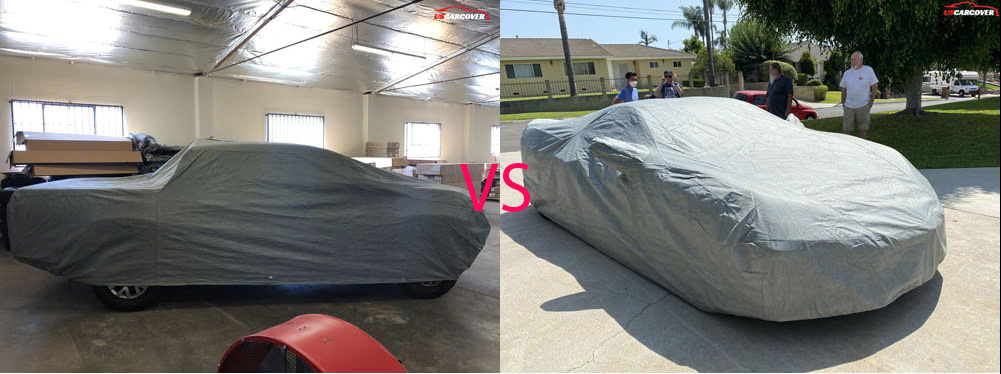
Garage storage covers vs. car covers are essential choices when it comes to protecting your vehicle from environmental damage. Both options serve to preserve the condition of your car, but each is tailored to different storage needs. Garage storage covers are ideal for indoor settings, focusing on protection from dust, dirt, and minor scratches, while car covers are built to withstand outdoor elements like UV rays, rain, and snow. Knowing the differences and advantages of each will help you make the best choice to safeguard your vehicle based on where you store it.
What is a Garage Storage Cover?
Garage storage covers are specially designed for vehicles kept indoors, providing a lightweight yet effective layer of protection. Unlike outdoor car covers, they are crafted for indoor use, emphasizing dust prevention over weather resistance.
Types and Materials: Garage storage covers typically come in breathable materials like soft cotton blends or microfiber. These fabrics prevent dust and allow air circulation, reducing the risk of mold and mildew buildup. Some garage covers also offer a soft inner lining to prevent scratches, making them an ideal choice for keeping your vehicle’s paint pristine.
Ideal Use: For cars stored in a garage, these covers are perfect for shielding against dust, dirt, and accidental scuffs, ensuring your vehicle stays clean and free from minor blemishes while in storage.
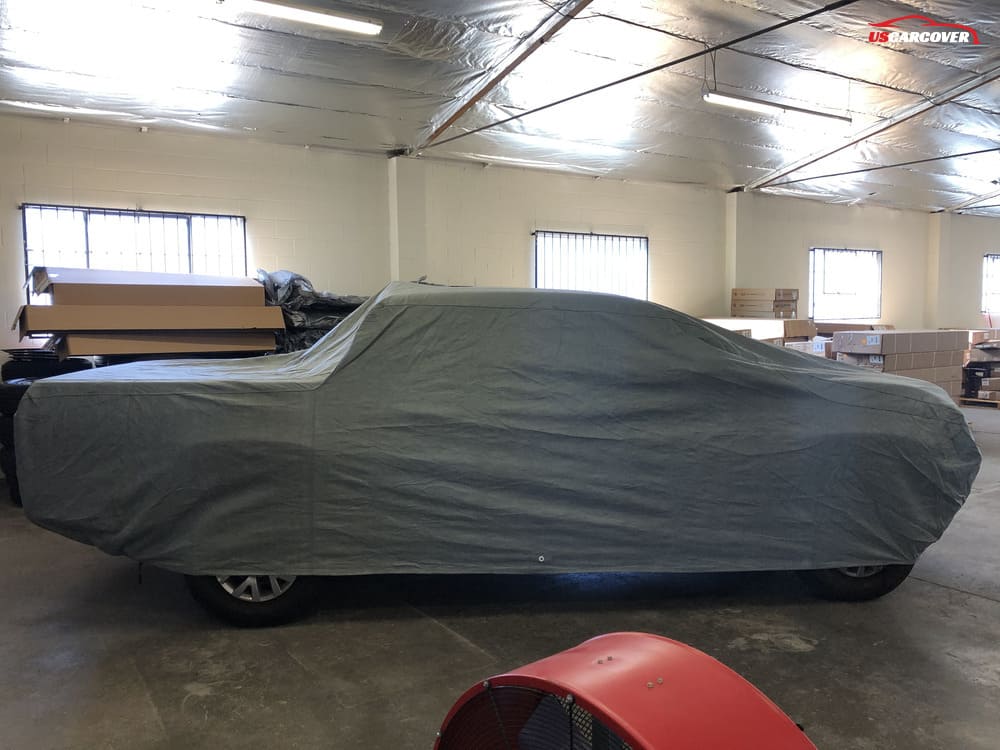
Related posts: Should I Use a Car Cover in the Garage?
What is a Car Cover?
A car cover is designed to protect vehicles stored outdoors, offering robust defense against various environmental elements. Unlike garage storage covers, car covers are crafted to withstand harsher conditions, making them ideal for outdoor or exposed parking spaces.
Types and Materials: Car covers are available in several durable materials, including polyester, waterproof fabrics, and multi-layered constructions. These materials protect against UV rays, rain, snow, and even hail. Some covers come with additional coatings for UV protection and water resistance, providing comprehensive shielding for any climate.
Ideal Use: Car covers are perfect for safeguarding vehicles parked outdoors or in exposed areas. They defend against sun damage, moisture, and unexpected impacts, ensuring your car’s paint and finish remain intact despite harsh weather conditions.
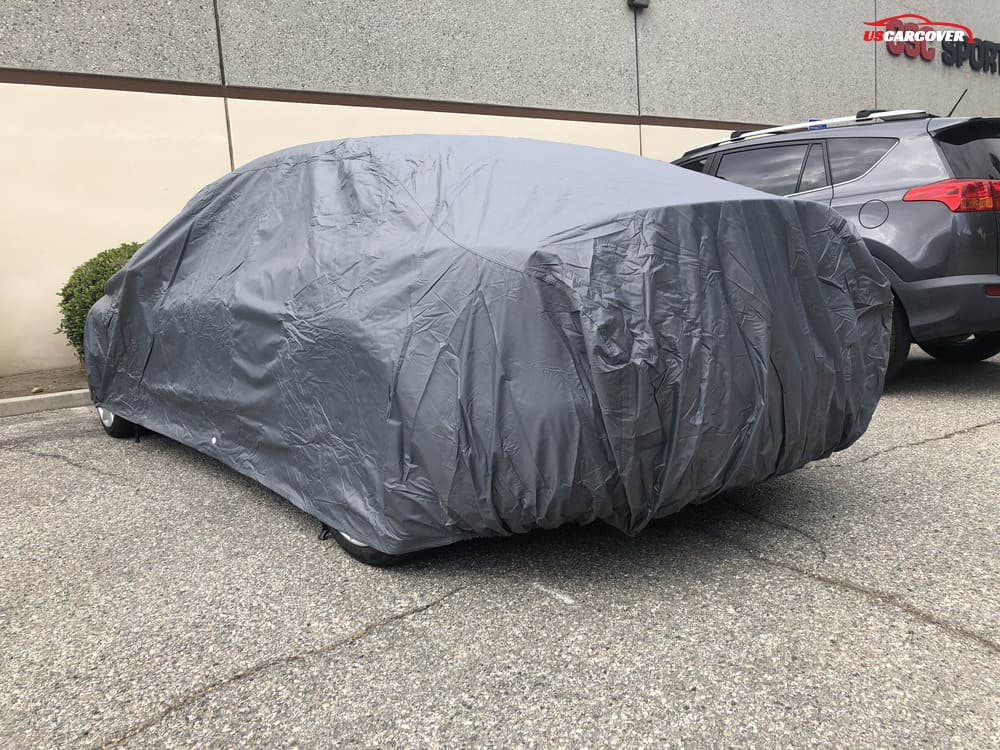
Related posts: Winter Car Protection Cover: 10 Noted to Use
Advantages of Garage Storage Covers
Protection from Dust and Dirt: Garage storage covers are highly effective at keeping dust, dirt, and other indoor particles off your vehicle. This is especially important in garages where dust can settle and affect the car's finish over time.
Breathability and Mold Prevention: Many garage storage covers are made from breathable fabrics, allowing air to circulate and preventing moisture buildup. This helps protect your vehicle from mold and mildew, which can occur in enclosed spaces.
Long-Lasting Durability Indoors: Since garage covers aren’t exposed to the harsh outdoor elements, they typically last longer, maintaining their protective qualities with minimal wear. This makes them a cost-effective choice for indoor car protection.
Scratch Prevention: With a soft inner lining, garage covers protect your car’s paint from accidental scuffs and minor scratches that can happen indoors, especially if items are moved around in a garage.
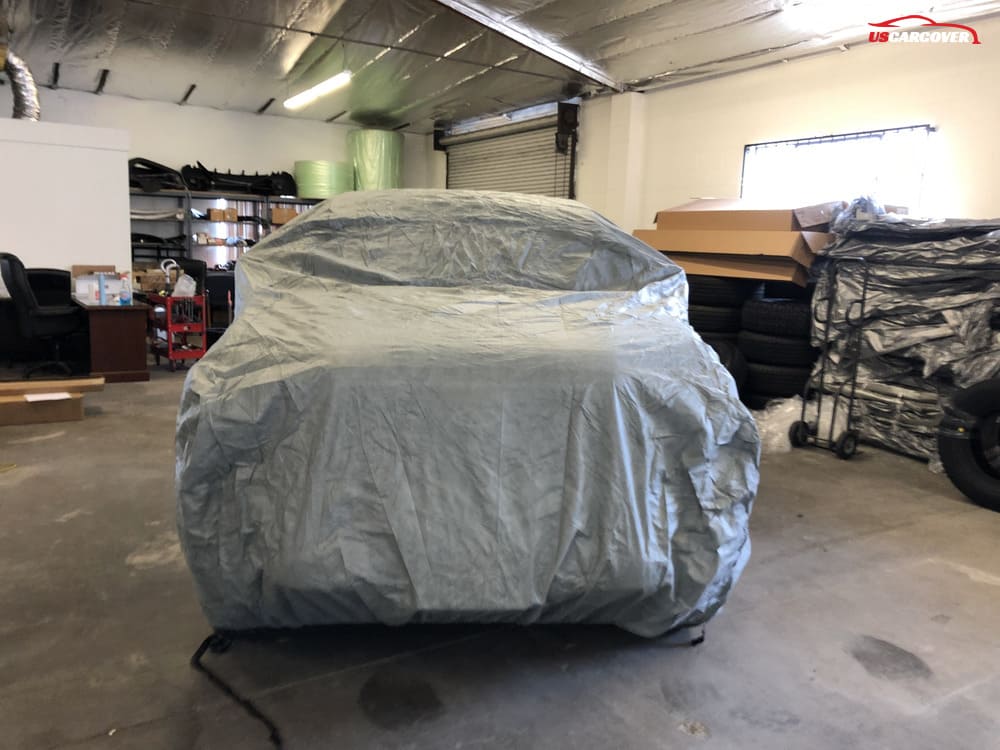
Advantages of Car Covers
Weather Resistance: Car covers are specially designed to endure outdoor elements. They provide a solid shield against UV rays, rain, snow, and even hail, protecting your vehicle’s paint from fading, cracking, or water damage over time.
Enhanced Security for Outdoor Vehicles: Car covers add an extra layer of protection against scratches, bird droppings, and debris that can damage your vehicle when parked outside. They also serve as a deterrent against potential theft or vandalism, as they obscure the car's contents from view.
Versatility in Various Environments: Whether you live in a sunny, rainy, or snowy climate, car covers offer adaptable protection, making them suitable for nearly any environment. Many are crafted with multi-layer materials to handle different weather conditions, ensuring consistent protection for your vehicle all year round.
Protection from Environmental Contaminants: Outdoor car covers also prevent tree sap, pollen, and dust from settling on your vehicle’s surface, which can be difficult to clean and may harm the paint if left untreated.
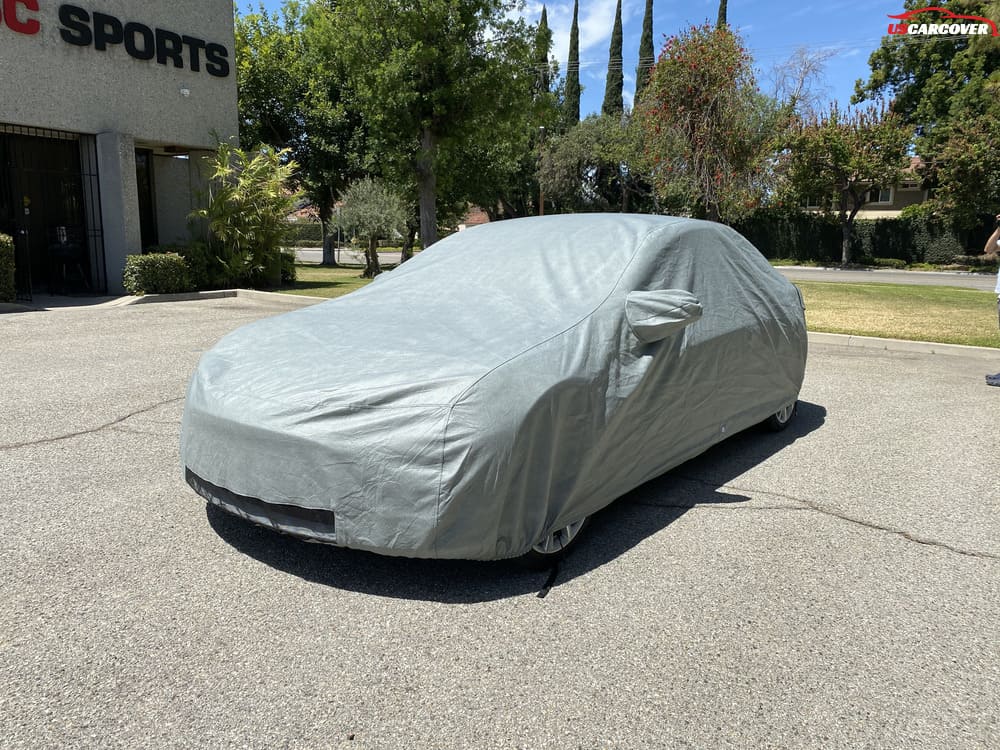
Related posts: Is the Car Cover Anti-Theft?
Disadvantages of Garage Storage Covers
Limited Protection Against Moisture and UV Rays: While garage storage covers are excellent for dust protection, they offer minimal defense against moisture or UV rays. For vehicles exposed to occasional sunlight or humidity, garage covers may not provide sufficient protection.
Potential for Dust Buildup: Though designed to keep dust off the vehicle, garage covers themselves can collect dust over time, requiring occasional cleaning to maintain effectiveness.
Restricted to Indoor Use: Garage covers aren’t built to withstand outdoor elements like rain, snow, or intense sunlight. Using them outside can lead to quicker wear and reduced effectiveness, limiting their application to indoor spaces only.
Limited Durability Against Impacts: Unlike some outdoor car covers, garage storage covers don’t usually offer robust impact protection. They may not prevent damage from accidental bumps or items falling nearby, which is something to consider in crowded garage spaces.
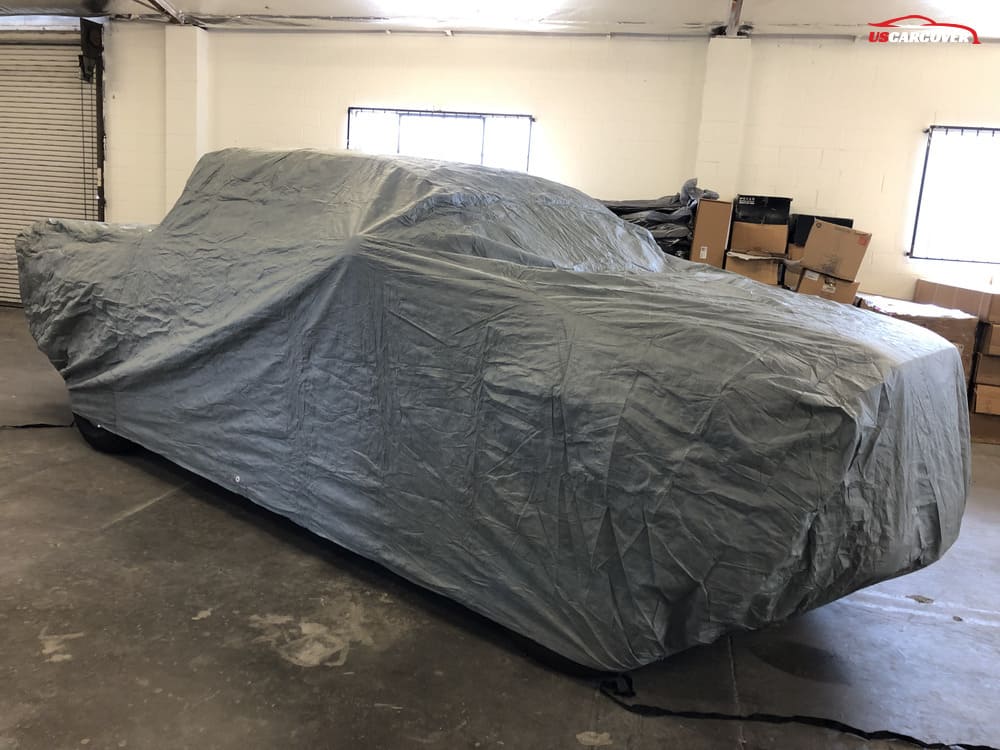
Disadvantages of Car Covers
Risk of Paint Damage: Car covers can inadvertently cause minor scratches if debris, such as sand or small particles, gets trapped between the cover and the vehicle’s surface. Without proper care when putting on or removing the cover, there is a risk of scuffing the paint.
Regular Maintenance Required: To ensure effective protection, car covers need frequent cleaning, especially if they’re exposed to harsh weather. Dirt, dust, and pollutants that accumulate on the cover can wear down its material and reduce its protective properties.
Related posts: How Car Covers Protect Vehicles from Heavy Rain
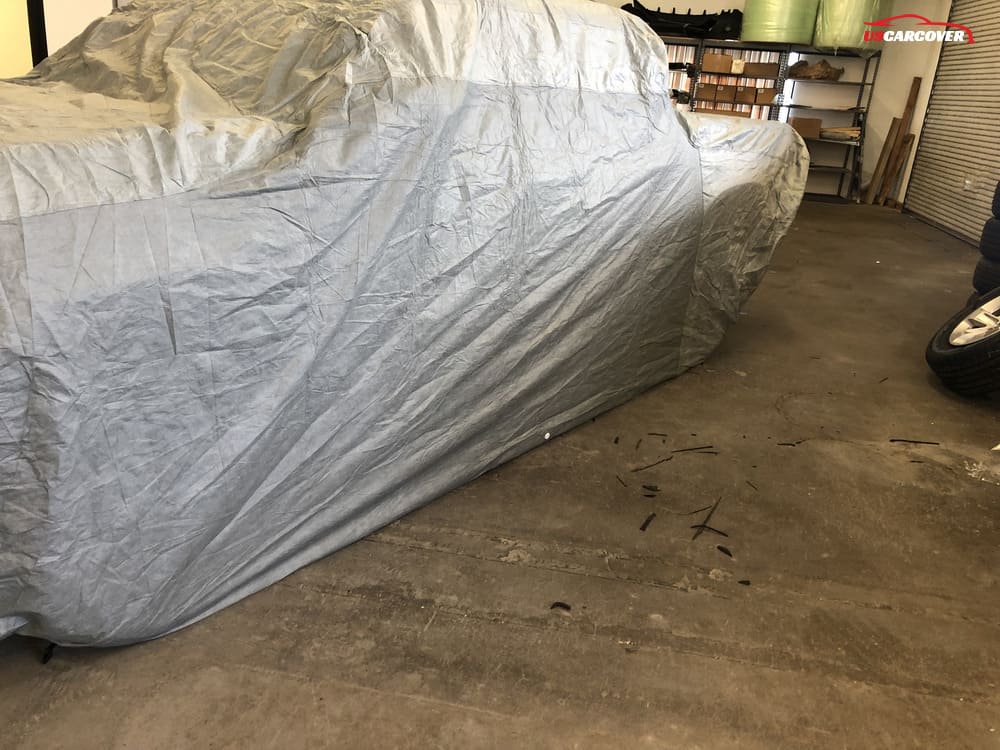
Comparison Table: Garage Storage Covers vs. Car Covers
| Feature | Garage Storage Cover | Car Cover |
| Protection Type | Primarily dust and dirt protection | Weather-resistant (UV, rain, snow) |
| Ideal Usage | Indoor storage | Outdoor or exposed environments |
| Material | Lightweight, breathable fabrics | Durable, multi-layered, waterproof |
| Durability | Long-lasting indoors, minimal wear | Prone to wear and tear outdoors |
| Ease of Use | Easy to put on and remove | May be bulky and time-consuming |
| Protection Against Impacts | Limited protection from minor scuffs | Shields against debris, bird droppings |

Conclusion
Whether you choose a garage storage cover or a car cover depends on where you store your vehicle. For indoor storage, a dust-proof garage cover is ideal, while for outdoor protection, a weather-resistant car cover offers comprehensive defense. Choose the cover that aligns with your environment. For indoor storage, prioritize a breathable and soft garage cover, while for outdoor conditions, go for a high-quality, all-weather car cover to ensure your car remains in excellent condition for years to come.
